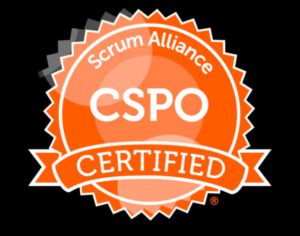Employee recognition is a critical component of any successful business. Recognizing your employees’ hard work and achievements can boost morale, increase productivity, and create a positive work environment. However, traditional employee recognition programs are no longer enough to meet the demands of the modern workplace. In this guide, we will discuss modern employee recognition and how it can benefit your business.
What is Modern Employee Recognition?
Modern employee recognition is a comprehensive approach to recognizing and rewarding employees’ achievements and contributions to the organization. It involves more than just monetary incentives or a pat on the back. Modern employee recognition programs are designed to be more personalized and meaningful, taking into account the individual needs and preferences of each employee.
Why is Modern Employee Recognition Important?
Employee recognition is a powerful tool for employee engagement and retention. It helps to create a positive work environment where employees feel valued, appreciated, and motivated to do their best work. Modern employee recognition programs take this a step further by providing employees with personalized and meaningful rewards that align with their goals and interests. This helps to build a stronger connection between employees and the organization, leading to increased loyalty and commitment.
Benefits of Modern Employee Recognition
There are many benefits to implementing a modern employee recognition program in your organization. Here are just a few:
Increased Employee Engagement: Employees who feel recognized and appreciated are more engaged in their work and more committed to the organization.
Improved Retention: Modern employee recognition programs can help to reduce turnover rates by creating a positive work environment where employees feel valued and supported.
Higher Productivity: When employees feel recognized and appreciated, they are more motivated to perform at their best, leading to increased productivity and better results.
Better Team Dynamics: Modern employee recognition programs can help to build stronger teams by fostering a culture of appreciation and collaboration.
Improved Customer Satisfaction: When employees feel valued and engaged, they are more likely to provide excellent customer service, leading to increased customer satisfaction.
How to Implement a Modern Employee Recognition Program
Implementing a modern employee recognition program requires careful planning and execution. Here are some steps you can take to get started:
Define Your Objectives: Start by defining the objectives of your employee recognition program. What do you hope to achieve? What outcomes do you want to see? Make sure your objectives align with your overall business goals.
Gather Feedback: Talk to your employees to get their input on what types of recognition they would find most meaningful. Consider conducting surveys or focus groups to gather feedback.
Design Your Program: Based on your objectives and employee feedback, design a recognition program that is tailored to your organization’s needs. Consider different types of rewards and recognition, such as personalized notes, public recognition, or career development opportunities.
Communicate Your Program: Once you have designed your program, communicate it clearly and consistently to your employees. Make sure they understand the program’s goals, how it works, and what rewards they can expect.
Evaluate and Adjust: Regularly evaluate your program’s effectiveness and make adjustments as needed. Solicit feedback from employees and track key metrics, such as engagement and retention rates.
What are the 4 types of recognition?
Employee recognition is an essential part of maintaining a positive and productive workplace culture. It helps boost employee morale, engagement, and motivation, which in turn can lead to higher job satisfaction and better job performance. There are several ways that employers can recognize their employees, and in this article, we will discuss the four main types of recognition, as well as some employee recognition tools and resources.
The first type of recognition is verbal recognition, which is simply acknowledging an employee’s accomplishments through spoken or written communication. This can be as simple as a thank-you note or an email congratulating an employee on a job well done. Verbal recognition is a cost-effective way to show appreciation to employees and can have a significant impact on their motivation and engagement.
The second type of recognition is non-monetary recognition, which involves providing employees with rewards that are not directly tied to monetary compensation. This can include things like extra time off, flexible work schedules, or the opportunity to work on special projects. Non-monetary recognition can be an effective way to show appreciation to employees without breaking the bank, and it can help foster a positive and supportive work environment.
The third type of recognition is monetary recognition, which involves providing employees with tangible rewards that have a financial value. This can include bonuses, gift cards, or other monetary incentives. While monetary recognition can be a powerful motivator, it’s important to ensure that these rewards are tied to specific performance metrics and are distributed fairly to avoid creating a culture of entitlement.
The fourth type of recognition is public recognition, which involves acknowledging employees’ accomplishments in front of their peers or the wider organization. This can include things like company-wide announcements, award ceremonies, or recognition programs that highlight outstanding employee performance. Public recognition can be a powerful way to boost employee morale and motivation, as it helps to create a sense of pride and belonging within the workplace.
In addition to these four types of recognition, there are many employee recognition tools and resources available that can help employers create a culture of appreciation and recognition within their organization. These can include things like recognition software, employee engagement platforms, or training programs designed to help managers and leaders develop their recognition and appreciation skills.
Overall, employee recognition is an essential part of creating a positive and productive workplace culture. By providing employees with the recognition and appreciation they deserve, employers can boost employee morale, engagement, and motivation, which can lead to better job performance, higher job satisfaction, and a more successful business overall.
Conclusion:
In conclusion, modern employee recognition is a powerful tool for engaging, retaining, and motivating employees. By implementing a comprehensive recognition program that takes into account employees’ individual needs and preferences, you can create a positive work environment where employees feel valued and appreciated. Follow these steps to implement a modern employee recognition program in your organization and reap the many benefits it has to offer.





Be First to Comment